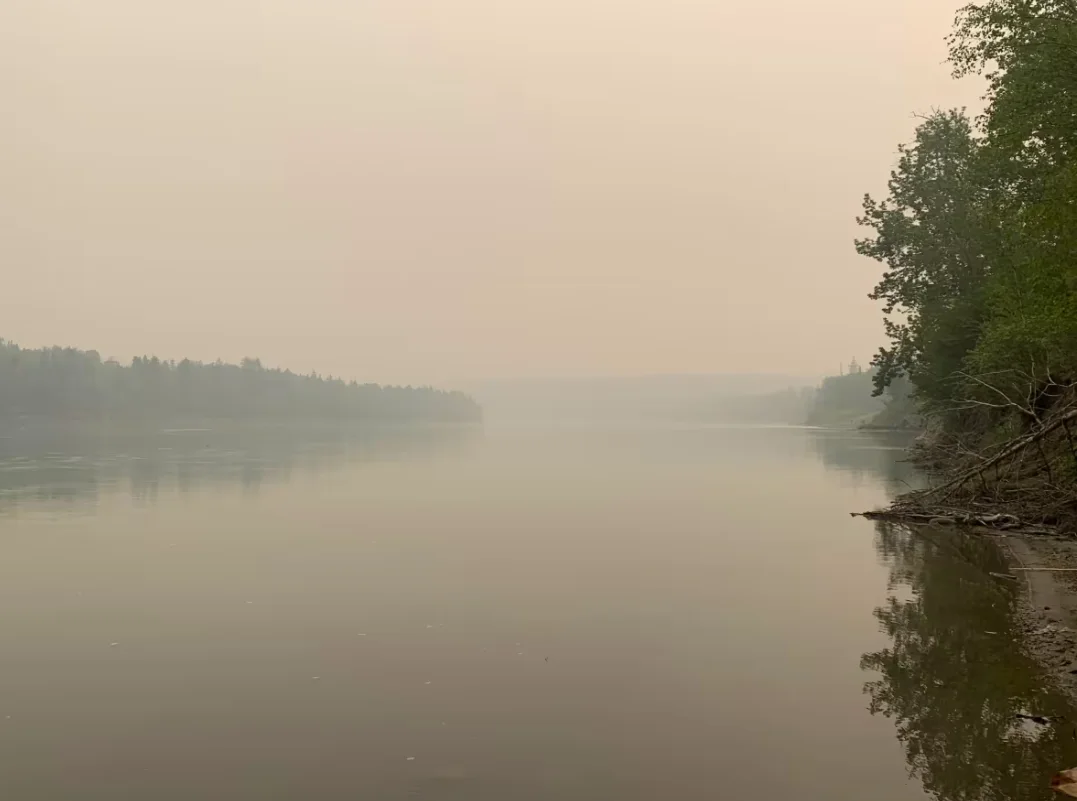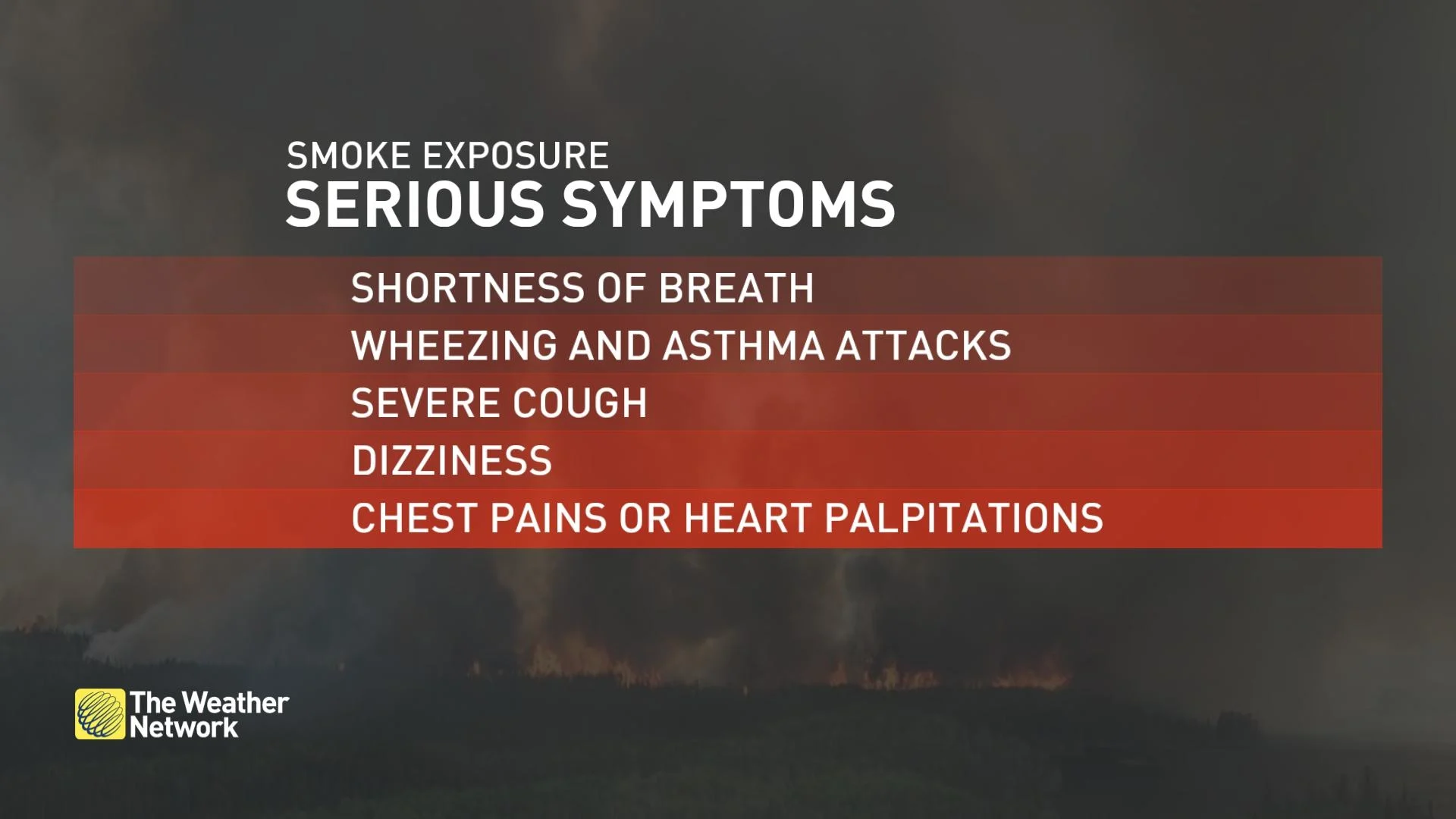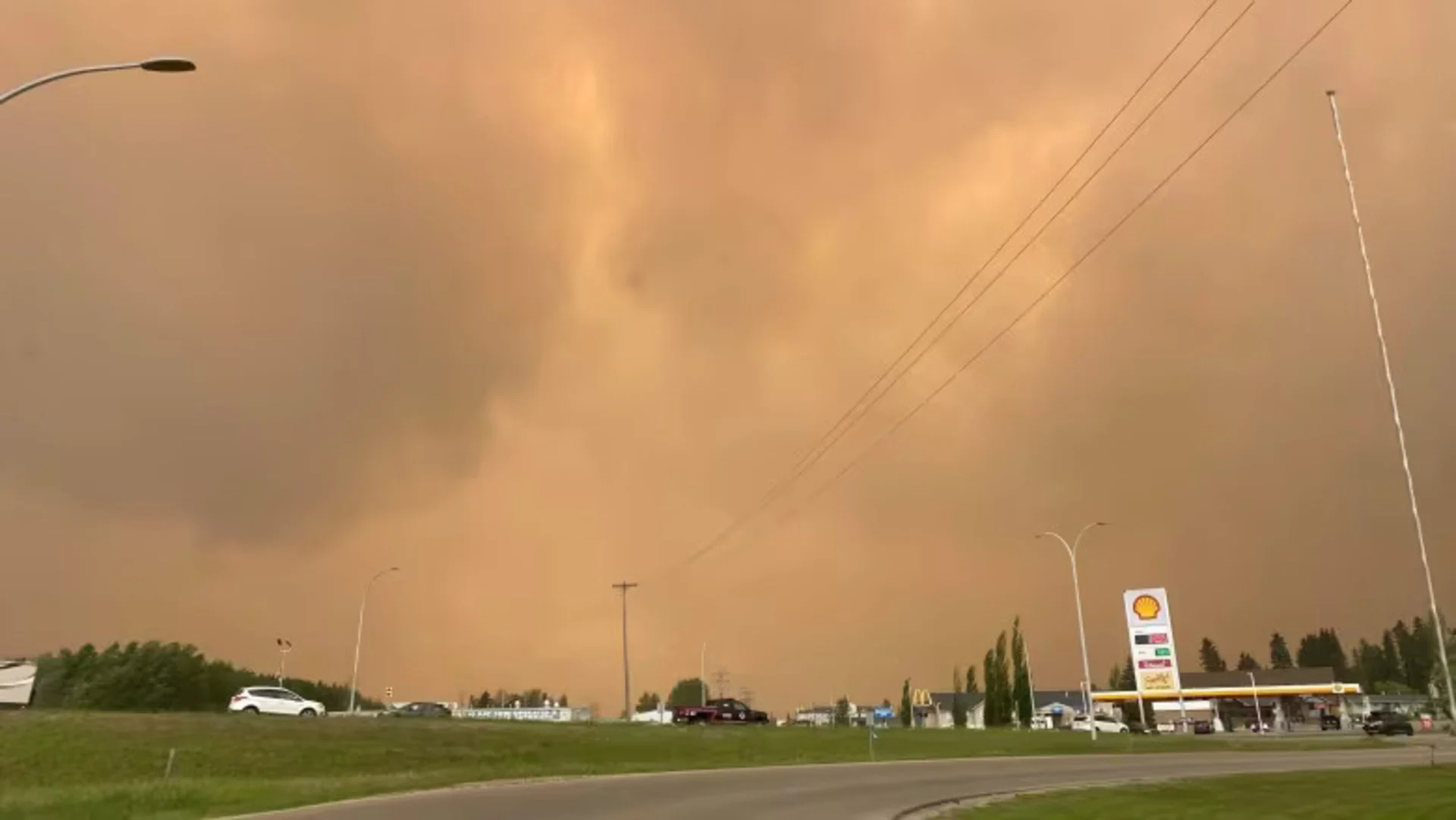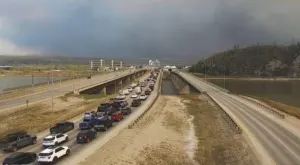
Why the air quality index needs an upgrade to better measure wildfire smoke
Visit The Weather Network's wildfire hub to keep up with the latest on the unprecedented wildfire season across Canada.
In a summer of historic wildfires, Canadians have undoubtedly found themselves checking the air quality more than usual.
But the way that number is calculated varies by province, and experts say it will need to be changed to better reflect the risks and prevalence of wildfire smoke.
For millions of Canadians, the particulate matter turning their skies grey or orange in the summer — and leading to health impacts over time — isn't fully showing up in the metrics they see.
Here's a closer look at the issue.

Smoke blankets the North Saskatchewan River in Edmonton on May 20, 2023. (Paige Parsons/CBC)
How AQHI works (and doesn't)
Canada's Air Quality Health Index (AQHI) is based on three different pollutants: ozone, nitrogen oxide and particulate matter (PM2.5).
All three are found in wildfire smoke, though there are especially high levels of PM2.5.
RELATED: AQI, AQHI, and your health: Air quality ratings explained
Wildfires release tiny, health-harming particles 2.5 microns or smaller in size — smaller than a human hair — that can penetrate your lungs and enter your bloodstream and negatively impact your health.
The AQHI is on a scale between one and 10+, and is designed to provide the public with a sense of the risk involved in exposure.
The idea is simple — the higher the number, the higher the health risks, particularly for seniors, children and people with pre-existing health conditions such as cardiovascular disease.

The original metric, still in use in Ontario, Quebec and Alberta, essentially averages the risk of the three pollutants.
But experts say AQHI doesn't work as effectively in instances where there is a lot of wildfire smoke and not other pollutants, since the average is lower than the risk presented by PM2.5.
For instance, on the morning of Aug. 16, Toronto had an AQHI measuring four (moderate risk), even though the concentration of PM2.5 was 42.6 micrograms per cubic metre, which is considered "very poor."
How it was changed in B.C.
British Columbia, which is no stranger to wildfire smoke, pioneered a slightly modified version of the index, known as AQHI-plus.
In that province, if the measure of PM2.5 is higher than the average of all three pollutants, then the PM2.5 level is used to measure the total AQHI.

A child swings at a park in East Vancouver against smoky skies on Sept. 5, 2017. The extreme wildfire season in B.C. that summer prompted changes to how the AQHI was calculated in that province. (Lisa Johnson/CBC)
The change was made after a particularly severe wildfire season in 2017.
"The AQHI wasn't very responsive to those air quality conditions," said Sarah Henderson, scientific director of environmental health services at the British Columbia Centre for Disease Control.
"People would be in the community, and they would find that they were having smoke exposure. And that disconnect between what people were experiencing and what the AQHI was telling them was problematic for us."
Reflecting a new reality
The AQHI was initially developed by the federal government to communicate about the air quality risks in the urban environment, where sources such as traffic and industry kind of dominate the air quality profile.
But air quality is changing, experts say.
SEE ALSO: Does breathing in wildfire smoke mean lung issues for life?
Regulations have helped reduce industrial emissions and vehicle emissions, while wildfire smoke now makes up a greater fraction of the overall measure of poor quality.
The changes made in B.C. reflect that new reality, Henderson said.
"I would describe what we've done in BC as maybe a Band-Aid solution until nationally we have the conversation necessary to think about what the AQHI needs to be into the future," she said.
"We need to keep our tools for communicating about air quality up to date with the way Canadian air quality is changing."
WATCH: Wildfire smoke causes dangerous air quality for British Columbia
Ontario, Alberta and Quebec do it differently
The B.C. approach has been adopted by most other provinces and territories, but Ontario, Alberta and Quebec haven't gotten on board.
Armel Castellan, a warning preparedness meteorologist for Environment and Climate Change Canada, said the department hopes this will change.
"They have not quite adopted the enhanced AQHI, but it is something that we're in obviously close communication with," said Castellan.
"We're harmonizing their processes with ours and the end goal is to have this right across the country."
Gary Wheeler, a spokesperson for the Ontario's Environment Ministry, confirmed the province is working with ECCC for "enhancing the AQHI program to include a PM2.5 trigger, this is in addition to the current process of using the cumulative effects of ozone, nitrogen dioxide and fine particulate matter."
Alberta, as well, said it is working with ECCC on the same matter and "evaluating the federal PM2.5 override formula for AQHI reporting,"
"There are several reasons that Alberta is considering this change, including whether this formula better reflects the real-life experiences during wildfire smoke events and the opportunity for more consistent AQHI reporting and forecasting across the country," said Carla Jones, a spokesperson.

Smoky skies in Edson, Alta., on the evening of June 9, 2023, just before an evacuation order was issued for the town. (Submitted by Nicki Frison)
Quebec uses a different scale. In a statement, an Environment Ministry spokesperson said the province rates air quality on a scale from one to 50+, based on the percentage of pollutants that can occur every day. They also look at that fine particulate matter separately. The spokesperson did not respond when asked whether the province plans to adopt the federal government's new AQHI model.
Why it matters over the long term
Jill Baumgartner, an associate professor in the department of epidemiology, biostatistics and occupational health at McGill University, said an accurate reading of the air quality will become increasingly important given the increase in wildfire smoke.
"We tend to think about wildfire smoke as being like an acute exposure … but the strongest impacts on health happen from long-term exposure to air pollution," she said.
"As these events become more frequent like we've experienced this summer, this wildfire smoke is going to become much more of a long-term chronic exposure, and those are the ones that we are most concerned about from a health standpoint."
Thumbnail image courtesy of Ben Nelms/CBC.
This article, written by Benjamin Shingler, was originally published for CBC News. With files from Ashley Fraser.









